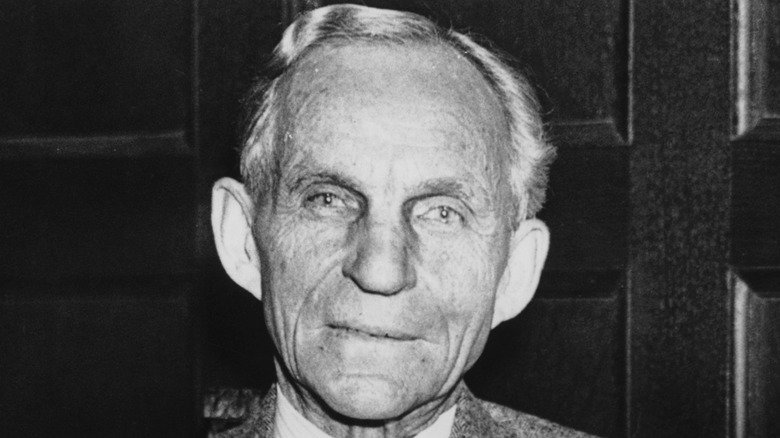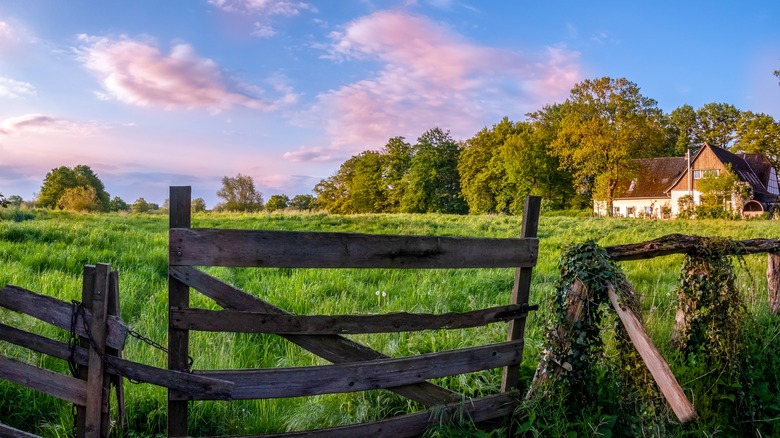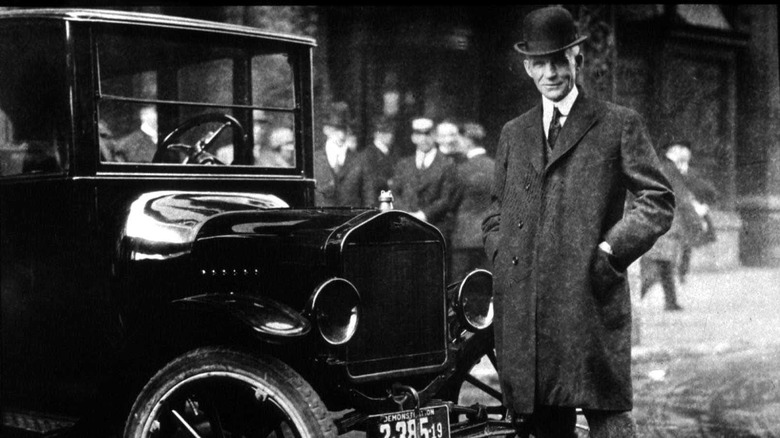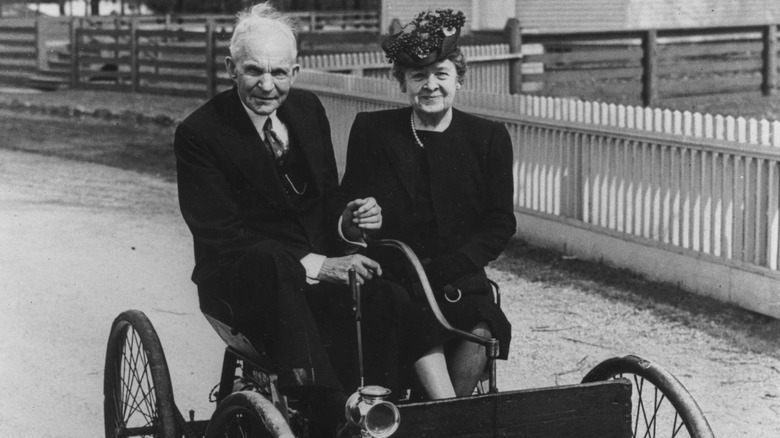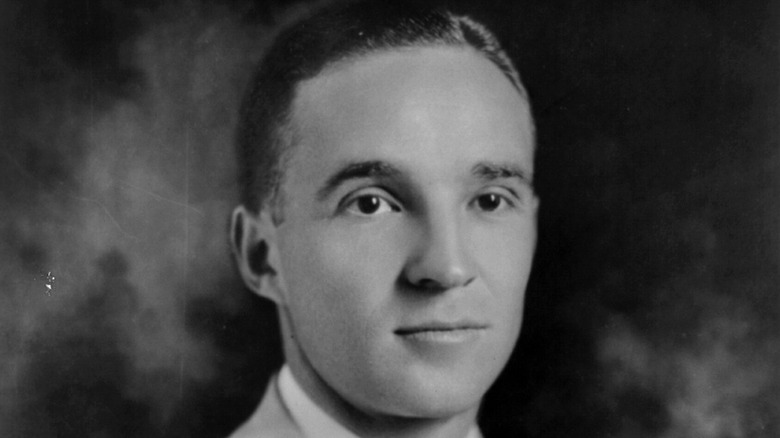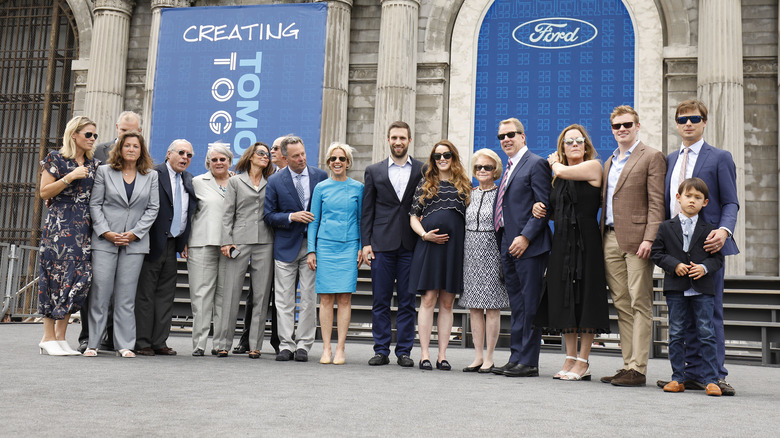Henry Ford's Family Tree Explained
In the fast world of automotive production, the word Ford automatically conjures images of F-Series trucks and Mustangs zipping down city streets and rural back roads. True motor enthusiasts might even think of the modern automotive assembly line, a manufacturing marvel that was the invention of Henry Ford himself, and seriously altered not only the way we drive, but also the way we build (via History). But beyond the powerful cylinders and rotating wheels of innovation, there is something else that Ford Motors is built on — something that might not immediately come to mind. It is family.
Ford Motors is currently the fifth most successful family run corporation in the world, preceded only by the likes of Walmart, Volkswagen, Berkshire Hathaway, and Exor (via Family Capital). Roots run deep for Henry Ford, an American farm boy turned businessman, whose automotive vision is still spinning wheels. Here's a look at the Ford family tree.
Henry Ford's parents enjoyed a storybook romance on a rural farm
According to Geneanet, Henry Ford was the first surviving son of William Ford and Mary Litcott, a couple with a storybook romance tale of their own. The Henry Ford Heritage Foundation describes William as "a wiry young man of medium height, with high cheekbones and firm bone structure," who had grown up on an Irish tenancy, harboring dreams of someday owning an American farm. That dream came true in 1858 when he purchased a small but promising piece of farmland for $600 and even more dreams were realized.
William Ford took on a part-time job farming for neighboring landowner Patrick O'Hern, who hailed from the same section of Ireland as William's family. While tending to O'Hern's 90 stretching acres, a young orphan girl who the O'Hern family had adopted caught his eye. She was none other than Mary Litogot. The two developed a friendship that would soon fan the flames of romance. Together, William and Mary would fondly raise Henry and four other siblings. In addition to eventually inheriting the O'Hern property, William Ford would also grow to be a well-respected community member, serving as deacon of the local church and an active member of the local school board.
Henry Ford had four farm-raised siblings
Henry Ford was the eldest of William and Mary's five children. To that end, he was expected to someday inherit the family farm and all the responsibility that came with it. As time wore on, however, it became apparent that Henry's siblings were more in tune with the natural way of life that "grandfather O'Hern" so painstakingly tried to instill in them all.
Compared to his siblings John, Margaret, Jane, and William, Henry possessed a much more mechanically inclined mind. According to the Henry Ford Heritage Association, many of Henry's oldest memories were of him and his brother John learning the intricacies of nature, from nests and trees to furrowed and feathered friends. Very little is known today in regard to the brother Henry so fondly remembered. However, Family Search reports that Henry's sister Margaret lived a long and plentiful life in rural Michigan, dying at the age of 92. In 1887, Margaret wed James Ernest Ruddiman and the couple bore one daughter by the name of Mary Catherine Ruddiman.
Clara Bryant Ford was inducted into the Michigan Women's Hall of Fame
According to Geneanet, Henry Ford wed Clara Bryant in April 1888. At the tender age of 22, she became Clara Bryant Ford, taking on Henry's affinity for automotive tech in addition to his last name (via History). Both hailing from rural farm families, Henry and Clara appeared equally happy husking corn as they were mass-producing automobiles.
Clara was a huge advocate of her husband's innovative take on technology. She supported his ideas long before they were paying off, back when Henry had to relocate 10 different times, all the while juggling inventing with farm and engineering jobs. In addition to advocating for her husband prior to his achieving colossal success, she was also an active women's suffragist, a position that eventually got her inducted into the Michigan Women's Hall of Fame (via Google Arts and Culture). While that honor was bestowed upon her post-humus, she held several esteemed positions throughout her lifetime. Among them were vice chair of the Dearborn branch of the Equal Suffrage League of Wayne County and president of the Women's National Farm & Gardens Association (via Michigan Women Forward).
Henry and Clara's son Edelson Ford designed the Lincoln Continental
It could be said that what Henry Ford was to industry, Edelson Ford was to design. As Henry and Clara's only child, Edelson was the sole heir to a promising family fortune. At the age of 2, Edelson took a spin in the first ever Quadricycle and immediately developed an affinity for automobiles (via Ford) producing his first design sketch at just 10 years of age.
Fast-forward to 1922, when Edelson was already appointed president of Ford Motor Company, and we see that he also acquired the Lincoln Motor Company. It was at Lincoln where Edelson's talent took on a life of its own. Inspired by the flashy designs of European sports cars, Edelson designed the very first convertible Lincoln Continental, which was incidentally named for sporting a "Continental" look (via The Henry Ford). Renowned for its elegance and sophistication, this 1941 vehicle is now enshrined as part of the Driving America exhibit.
A five-generation dynasty currently led by William Clay Ford Jr.
The Ford family fortune is now five generations strong, consisting of over 30 family members, all of them succeeding, surpassing, and inspiring. Notable family members include Henry Ford II, aka "Hank the Deuce" (via The Atlantic). As charismatic as he was business savvy, this third-generation Ford leader was responsible for many of the popular cars you see today, including the Mustang, Thunderbird, and Falcon.
The fourth generation was the rise of Ford socialites, with Ford women like Anne, author of "Laughing Allegra," and Charlotte, author of "21st-Century Etiquette," manning the helm. At the head sits executive chair William Clay Ford Jr., who professes that propelling Ford forward through the future of auto tech is his "life's work" (via Ford). And to think, this all began with Thomasine Smith and John Ford, a humble couple who lived and died in a little-known region of Ireland, and their son's dream of someday becoming a landowner. It just goes to show that we never truly know when or where the wheels of innovation might take an important turn.
